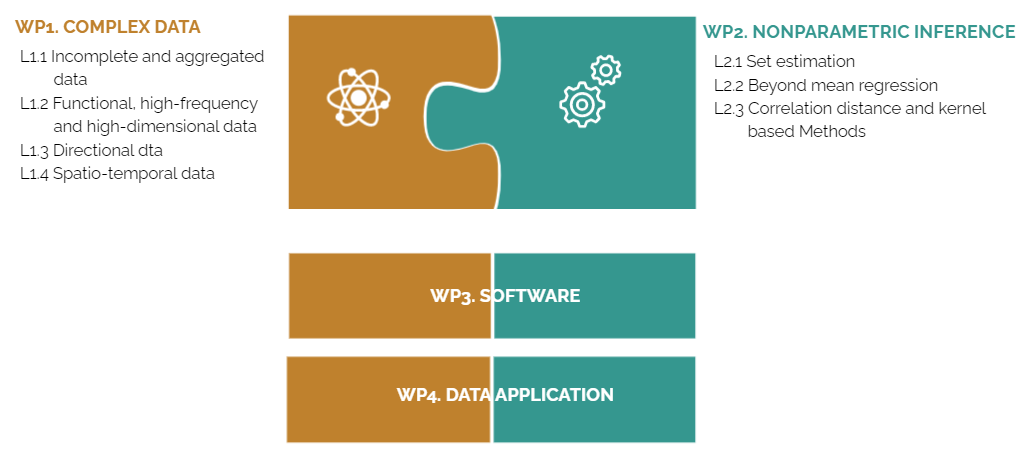CoDyNP is organized in four workpackages (WP), which are intimately interrelated, namely WP1. Complex data, WP2. Nonparametric inference, WP3. Software and WP4. Data application. The first two WPs (which comprise 4 and 3 research lines, respectively) gather the methodological objectives and some of them are joint objectives, but primarily assigned to the line where more challenges are expected. Responsibilities of PI and Co-PI will be organized by research line for WP1 and WP2, facilitating the exchange of experience between these WPs. The PI will be also the coordinator of WP3 and WP4.

Research lines in WP1. Complex data are organized according to data nature (which can be obviously combined and interrelated): incomplete (including biased, truncated and/or censored data, as well as missing data; L1.1) and aggregated data; functional and high-dimensional data (L1.2); directional data (with circular, cylindrical and toroidal data as particular/derived cases; L1.3); and spatio-temporal processes (L1.4). The PI will be responsible of L1.3 and L1.4 and the Co-PI will coordinate L1.1 and L1.2.
The second package, WP2. Nonparametric inference is set up by three research lines devoted to set estimation (L2.1; responsible PI); methods beyond mean regression (L2.2; responsible PI) and correlation distance (L2.3; responsible Co-PI).
Within WP3. Software, we aim to update and improve our R packages related to the research lines in WP1 and WP2, namely alphahull and alphahull3d for set estimation; NPCirc for circular data; DOvalidation for incomplete and aggregated data; multimode for multimodality tests, fda.usc for functional data and the more recent (HDiR) for directional highest density regions. We also aim to produce at least a package on quantile regression (BwQuant) and another one on ROC comparisons.
Regarding WP4. Data application, we will describe some areas of application within ongoing collaborations with other groups (COVID-19, medical imaging, genetics, environmental sciences, ecology, security, linguistics) all of them directly related with areas of intervention in Pillar 2 of Horizon Europe (and subsequently, with the Estrategia Española de Ciencia, Tecnología e Innovación).


